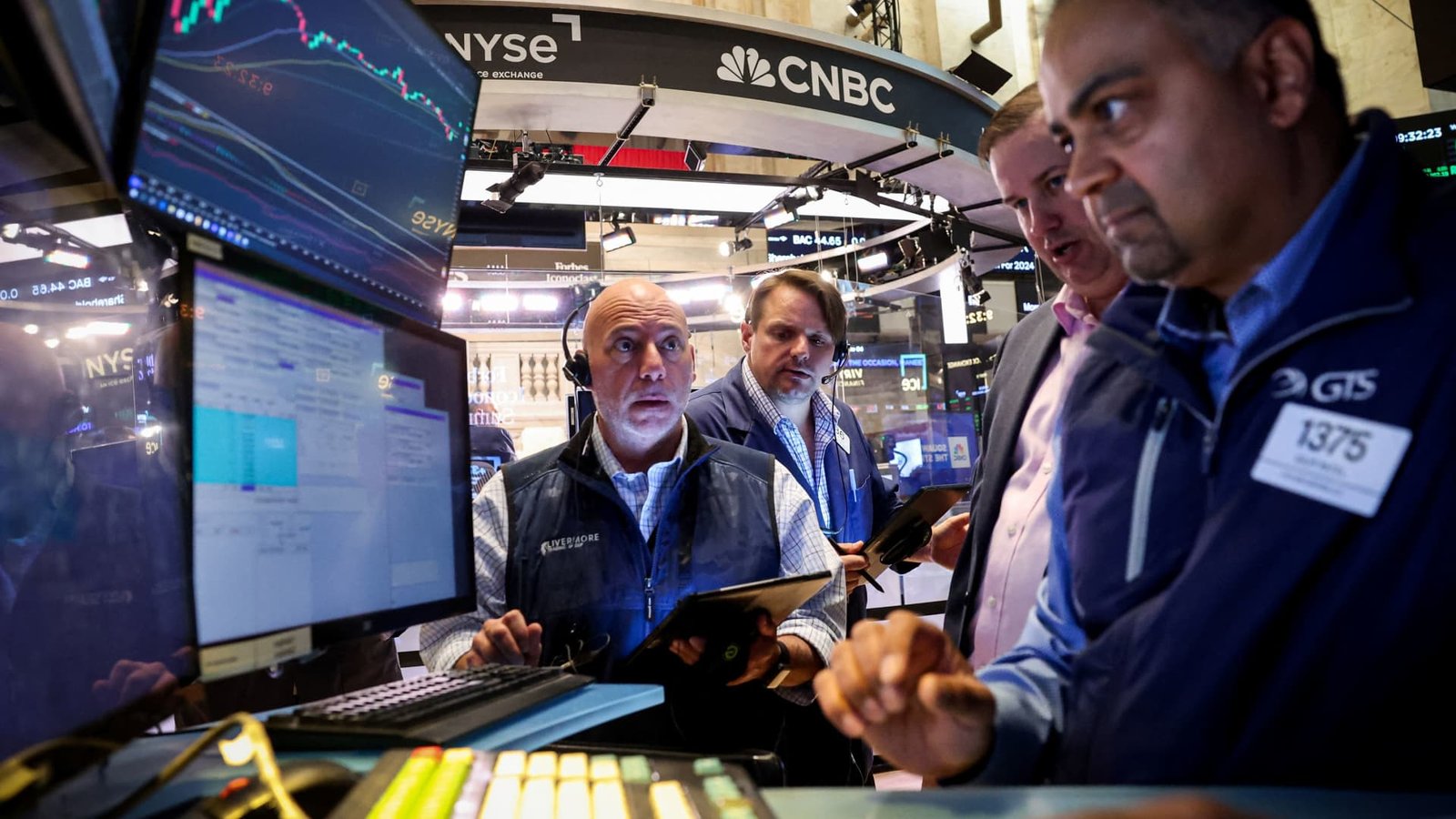Next week’s inflation data could be the first to show the impact of higher tariffs. Economists expect that the May readings for the consumer and producer price index — both inputs for the Federal Reserve’s favorite inflation gauge later this month — could start to show a rise in goods inflation, which is sensitive to the higher levies imposed by the Trump administration on imports. The consumer price index, or CPI, for example, is expected to have held steady in May, up 0.2% from April, according to economists polled by FactSet. Excluding volatile food and energy prices, however, CPI is set to have risen 0.3% from 0.2% on a monthly basis, and to 2.9% from 2.8% year over year. “Now is really the time when we should start to see the tariff impact,” said Bernard Yaros, lead U.S. economist at Oxford Economics. “It was too soon in February and in March and even in April, but May and onwards, we should definitely start to see the impact on goods prices.” That could signal an erosion of consumer spending power. On balance, market watchers think the stock market can look past a one-time adjustment in pricing pressures, while a sustained uptick in inflation would add to the view that the economy faces a looming slowdown. In recent weeks, investors have tried to reconcile gaps between the hard economic data, some of which started to show cracks in the labor market before May payrolls came in stronger-than-expected, and the soft economic data, which has signaled a deterioration in consumer sentiment for months. .SPX YTD mountain S & P 500, year to date Regardless, investors are hopeful that stocks can thread the needle when it comes to tariffs. The S & P 500 is less than 3% below its all-time high, and the Magnificent Seven stocks are again appealing to traders, as confidence grows that President Donald Trump will continue to back down from the steepest proposed levies. Just this week, three strategists from major firms — Barclays , Deutsche Bank and RBC — raised their year-end forecasts for the S & P 500. On Friday afternoon, the major averages were on track for a winning week. The Dow Jones Industrial Average was ahead 1.2% this week, the S & P 500 was up by 1.5%, and the Nasdaq Composite climbed 2.2%. ‘Countervailing stories’ There are reasons for optimism. For one, the effective tariff rate has come down significantly, especially after both China and the U.S. signaled a willingness to come to the table in negotiating duties. Economists are forecasting a slowdown, but not a recession. Investors are hopeful productivity will shoot up as companies incorporate artificial intelligence into their businesses. But there are concerns as well. The S & P 500 is starting to look expensive, selling for roughly 21 times forward earnings, back to where it was at about the start of the year. Some tariff rates have moved sharply higher, with Trump last week raising steel and aluminum tariffs to 50% , threatening the price of everything from oil rig equipment to beer cans. Marko Kolanovic, until last summer the chief market strategist at JPMorgan, told CNBC’s ” Fast Money ” Thursday that he expects a sell-off of 5% to 10% in stocks. Absent a recession, a 5% decline may prove a buying opportunity, he said. But if there’s an increase in recession odds, then even a 5% drawdown could be too shallow. Stocks are “close to all-time highs, but we still have all the problems,” Kolanovic said. “We have a trade war, we have sort of signs of economic slowdown, valuations are back to highs.” Giuseppe Sette, president and co-founder at Reflexivity, is troubled by some of the forces the market appears to be overlooking. “Something doesn’t feel properly priced,” he said, citing recession fears, as well as the risk of an escalation in geopolitical conflicts. Still, in the very near term, he expects markets will continue to remain rangebound. He likes Treasurys and gold, in addition to stocks tied to AI. “There [are] too many countervailing stories going on,” Sette said. “It’s very hard to go up. But, there is enough good news to float around, and we don’t have a very clear catalyst that’s going to take the market and sink it down.” Elsewhere next week, investors will also monitor Apple’s latest developer conference. Investors are hoping features on the latest iPhone models will be exciting enough to kickstart a new cycle of iPhone sales, a potential boon for a stock that has floundered this year. One analyst, who downgraded Apple this week , worries there will be no such catalyst. Seasonally speaking, however, Apple shares often move higher at this time of year. On the economic front, investors will also watch for the NFIB small business survey, studying details on the impact of tariffs in a corner of the economy regarded as more vulnerable to steep duties than larger businesses. Week ahead calendar All times ET. June 9-13 Apple WWDC25 Monday, June 9 10:00 a.m. Wholesale Inventories final (April) 1:00 p.m. Apple WWDC25 Keynote Tuesday, June 10 6:00 a.m. NFIB Small Business Index (May) Earnings: J. M. Smucker Co. Wednesday, June 11 8:30 a.m. Consumer Price Index (May) 8:30 a.m. Hourly Earnings final (May) 8:30 a.m. Average Workweek final (May) 2:00 p.m. Treasury Budget (May) Earnings: Oracle Thursday, June 12 8:30 a.m. Continuing Jobless Claims (05/31) 8:30 a.m. Initial Claims (06/07) 8:30 a.m. Producer Price Index (May) Earnings: Adobe Friday, June 13 10 a.m. Michigan Sentiment preliminary (June)
#Outlook #June



